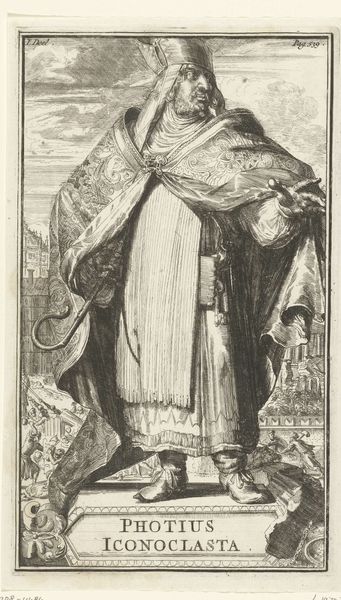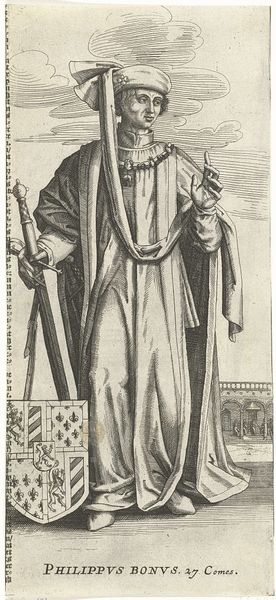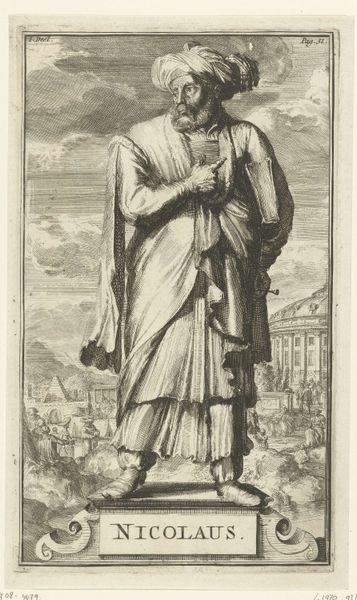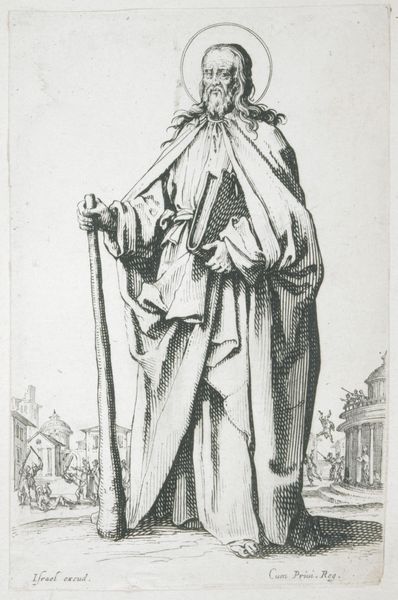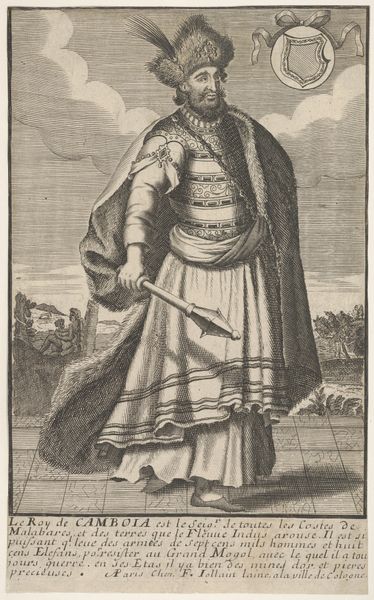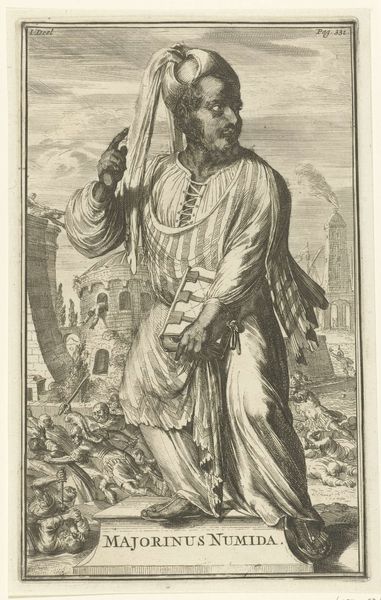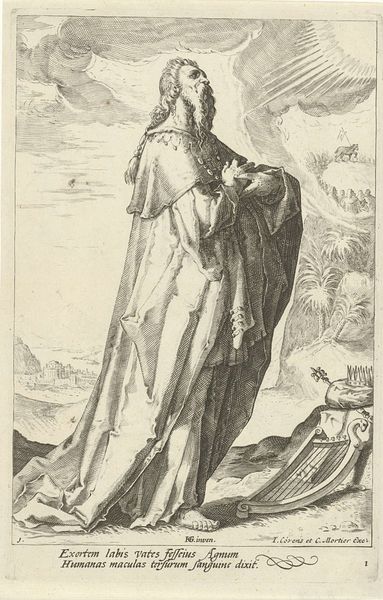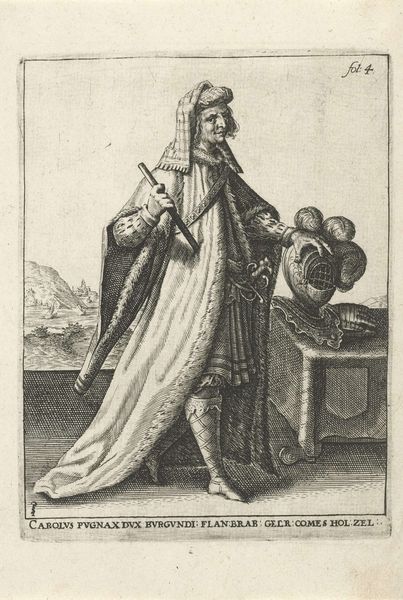
print, engraving
#
portrait
#
baroque
# print
#
figuration
#
line
#
history-painting
#
engraving
Dimensions: height 263 mm, width 157 mm
Copyright: Rijks Museum: Open Domain
Curator: Welcome. Here we have Romeyn de Hooghe’s "Portret van Arrius Alexandrinus" from 1701, housed here at the Rijksmuseum. De Hooghe was a pivotal figure in the Dutch Golden Age, chronicling political events and figures through printmaking. Editor: Immediately, the sheer detail leaps out, considering this is an engraving. The texture achieved with the lines creates a surprisingly life-like rendering of fabric and fur. Curator: It's worth noting that prints like these had a significant role in disseminating information and shaping public opinion. The engraving allowed for mass production, making the image and, crucially, the figure of Arrius, widely accessible. This piece presents not just an individual, but the image of erudition and possibly power, depending on its context of use. Editor: Absolutely, and when we think about the labour involved in creating such fine lines with metal tools, it's astounding. This wasn't just artistry; it was skilled, physical work aimed to circulate both image and ideology. Also, notice the choice to present the architectural backdrop alongside the pyramids? How do the choices in materials support the art and ideology it promotes? Curator: I’d suggest the pyramid aligns him with timeless knowledge, and that architectural element evokes a contemporary cultural context against this backdrop, creating a link between the ancient world and the contemporary. What is being presented to a modern audience by combining these two things, visually? The figure himself projects a commanding presence. Editor: Perhaps this interplay suggests the persistence of knowledge, or that both civilizations build on foundations—literal and intellectual. The paper and ink further underscore the intention: an accessible, reproducible message crafted through deliberate work. The figure, the material and composition… What might someone take away from all that labor and deliberate material choice? Curator: Precisely. The deliberate crafting and dissemination indicate the image of Arrius held specific value, and further study would determine its political purpose during its distribution. The composition seems carefully constructed to inspire reverence. Editor: Ultimately, this print speaks volumes about labor and cultural values. The choice of materials and mode of production shapes how information is shared and received. I can't think about what an audience thinks of this image today and compare to its moment of origin without factoring that in. Curator: Indeed, understanding the political use for widespread distribution helps provide its total context. Editor: Absolutely. Thank you.
Comments
No comments
Be the first to comment and join the conversation on the ultimate creative platform.

